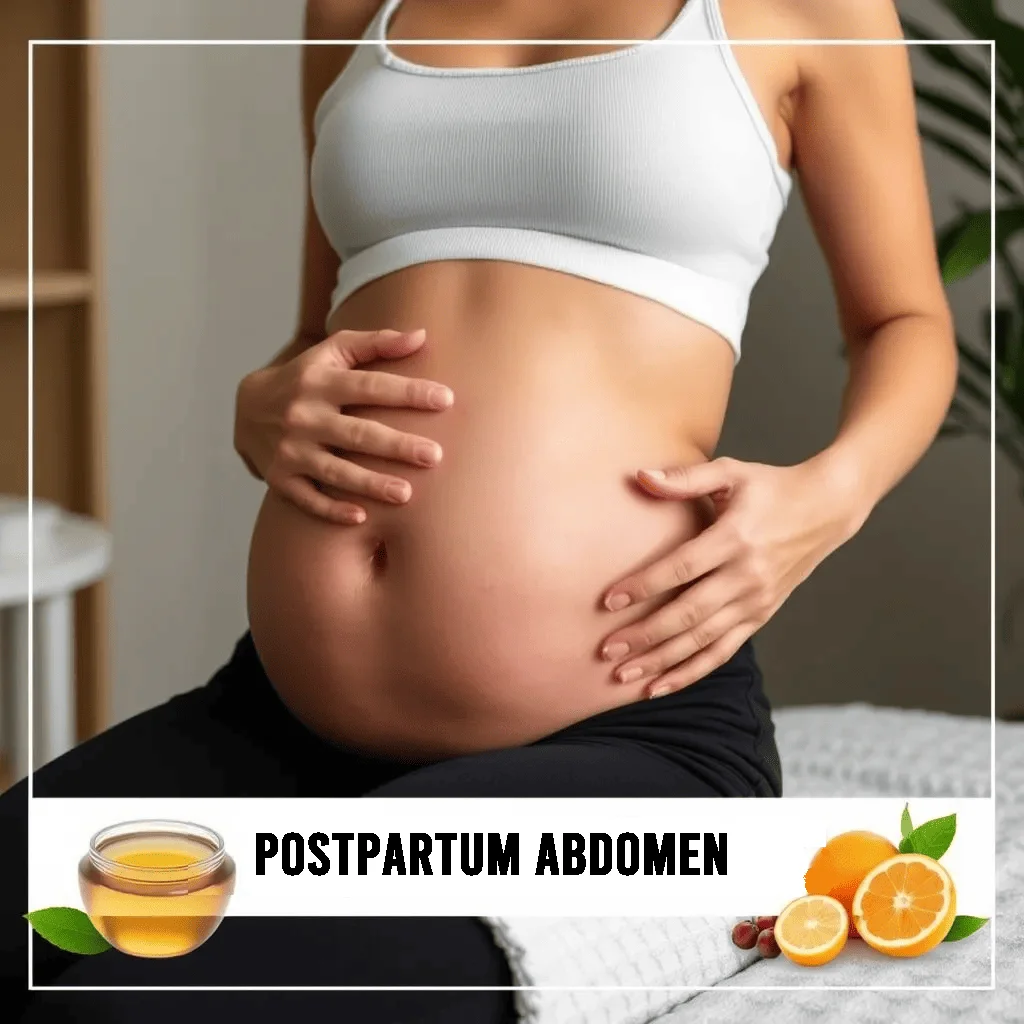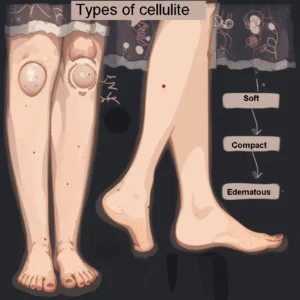

Postpartum Abdomen
Postpartum Abdomen: Reducing and Anti-inflammatory Treatments to Improve Your Well-Being
The postpartum abdomen is one of the most common areas where new mothers experience significant changes. After pregnancy, the body goes through a process of recovery and adaptation that includes reducing swelling and restoring muscle tone. For many women, this process can be challenging, as the postpartum abdomen may not only look different, but may also feel uncomfortable or swollen. In addition, sensitivity and hormonal changes play an important role in these symptoms. Therefore, slimming and anti-inflammatory treatments have become a popular option to help restore both physical and emotional well-being after childbirth.
Throughout this article, we will explore different effective treatments and approaches that can help reduce inflammation and improve the appearance of the postpartum abdomen, based on the latest research and best practices for postpartum recovery. This way, you can find solutions tailored to your needs and learn how to speed up your recovery process.
1. Why does the postpartum abdomen become swollen?

The postpartum abdomen is often swollen for a variety of reasons. Right after childbirth, the body retains excess fluids accumulated during pregnancy. This phenomenon is called fluid retention and often occurs in the first few days after childbirth. Although this process is uncomfortable, the body resolves it gradually. In addition, the stretching of muscles and skin during pregnancy causes abdominal distention, which increases the feeling of swelling and discomfort.
These conditions cause many women to seek quick and effective solutions. Understanding how the body functions during this time makes it easier to choose the most appropriate treatment. For example, when the body receives adequate hydration, it begins to gradually eliminate excess fluids from the tissues. Also, lymphatic drainage treatments help accelerate this process. Although results do not appear immediately, recovery progresses step by step. For this reason, consistency and patience are key at this stage.
2. Postpartum Tummy Tuck Treatments
When a woman decides to treat her postpartum tummy, she can choose from several effective approaches. Below, we explore some of the most popular treatments recommended by postpartum health experts. All of these methods have been shown to progressively and safely improve swelling and restore skin firmness.
2.1 Reducing massages
Reducing massages have become a popular option for reducing swelling and activating circulation in the abdominal area after childbirth. These massages apply specific techniques that mobilize retained fluids and promote the elimination of localized fat. In addition, many specialists use oils or creams with ingredients such as caffeine, known for its firming and reducing properties. When combined with an appropriate exercise routine, results can be seen in less time.
To avoid discomfort or injury, it is advisable to consult a trained professional. The ideal is to start with these massages from the sixth week postpartum, when the body already shows signs of recovery and swelling has decreased.
2.2 Radiofrequency treatments
Many women opt for radiofrequency to reduce localized fat and improve postpartum abdominal firmness. This non-invasive treatment emits energy waves that heat the deep layers of the skin, which activates the natural production of collagen and elastin. As a result, the skin becomes firmer and fluid retention decreases.
Unlike other procedures, radiofrequency does not require recovery time. Because of its rapid effect and minimal discomfort, many mothers prefer it as a safe aesthetic alternative. This treatment allows for an immediate return to daily activities, making it ideal for those seeking effective solutions without resorting to surgery.
2.3 Cryolipolysis
Cryolipolysis is a technique that uses extremely cold temperatures to remove fat cells non-invasively. This treatment has been shown to be effective for abdominal fat reduction, and many women choose it to treat the postpartum abdomen. Cryolipolysis is performed in short sessions, and although results are not immediate, significant improvements can be seen over time.
It is important to remember that this type of treatment is not suitable for everyone, so it is important to consult a professional to determine if it is a viable option in your case.
3. Anti-inflammatory foods for the postpartum abdomen
Food plays a crucial role in reducing swelling and improving the overall condition of the postpartum abdomen. Certain foods can help reduce fluid retention, improve digestion and reduce overall swelling. A balanced, anti-inflammatory diet effectively complements physical treatments and accelerates recovery.
3.1 Antioxidant-rich foods
Antioxidants help reduce inflammation and protect cells from free radical damage. Some antioxidant-rich foods include fruits such as blueberries, strawberries and cherries, as well as green leafy vegetables and green tea. Incorporating these foods into your daily diet can be an excellent complement to other slimming treatments, favoring the recovery of the postpartum abdomen.
3.2 Omega-3
Omega-3 fatty acids, present in foods such as fatty fish (salmon, sardines) and walnuts, have natural anti-inflammatory properties. Eating foods rich in omega-3 can help reduce postpartum abdominal swelling and promote muscle recovery, as these fatty acids also promote healthy skin and muscles.
3.3 Adequate hydration
Staying well hydrated is essential during the postpartum period, as water helps eliminate toxins and reduce fluid retention, a common factor in abdominal swelling. Drinking enough water also facilitates digestion and helps prevent constipation, another common problem in the postpartum period. In addition, consuming herbal teas such as chamomile and peppermint may be helpful in relieving abdominal bloating.
4. Physical exercise for the postpartum abdomen
Exercise is one of the best natural methods to improve the postpartum abdomen. However, it is essential to wait the proper amount of time before beginning an exercise routine. Exercises should focus on strengthening the muscles of the abdomen and pelvic area, which are often affected during pregnancy. Combining exercise with other treatments can result in a faster and more effective recovery.
4.1 Breathing exercises and abdominal contraction
Starting with gentle exercises, such as deep breathing and abdominal contraction, can help restore abdominal muscle strength without causing too much strain. These exercises not only help reduce swelling, but can also improve posture and flexibility. It is important to remember that, at first, the intensity should be low to avoid any type of injury.
4.2 Yoga and Pilates
Yoga and Pilates are excellent options for postpartum women. These disciplines not only improve flexibility, but also strengthen the abdominal and pelvic muscles gradually. In addition, they help reduce stress and anxiety, factors that can contribute to abdominal swelling and general discomfort. Many women opt for specialized postpartum classes to ensure they perform the movements correctly.
4.3 Walking and swimming
Walking and swimming are low-impact activities that can be done soon after delivery. These exercises help to improve circulation, reduce fluid retention and tone the postpartum abdomen safely. In addition, they are activities that can be done at any time of the day and are easy to incorporate into your daily routine.
5. Importance of rest and stress management for the postpartum abdomen
Adequate rest is crucial to the body’s recovery after pregnancy and can have a significant impact on the health of the postpartum abdomen. Lack of sleep and stress can increase cortisol levels, a hormone that contributes to fluid retention and swelling. Therefore, making sure you get enough rest is essential to speed recovery.
Stress management through relaxation techniques, such as meditation or deep breathing, can be very beneficial in reducing inflammation and helping the body recover more quickly. It is important to create a calm and restful environment during the postpartum period.
Conclusion
The postpartum abdominal recovery process is a unique experience for every woman. However, by combining a comprehensive approach that includes slimming treatments, an anti-inflammatory diet, proper exercise and rest, it is possible to significantly improve abdominal appearance and well-being. There is no one-size-fits-all solution, but with patience and the right methods, many women experience noticeable improvements in their postpartum abdomen. Always consult with a healthcare professional before beginning any treatment or exercise to ensure it is right for you.
Explore other related articles by clicking here and Visit the official website here




